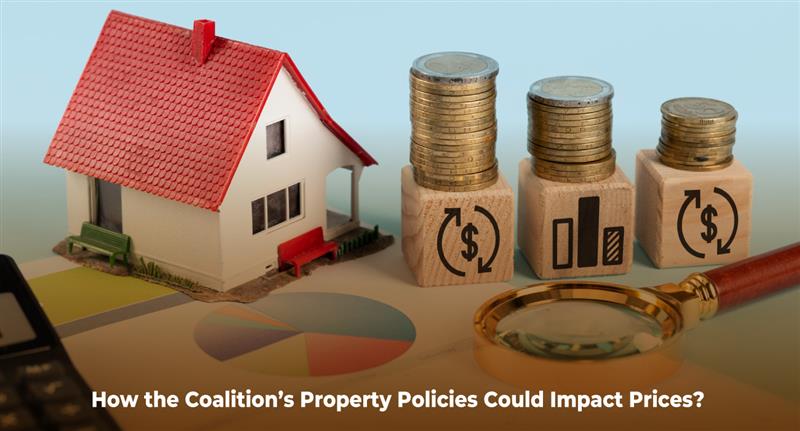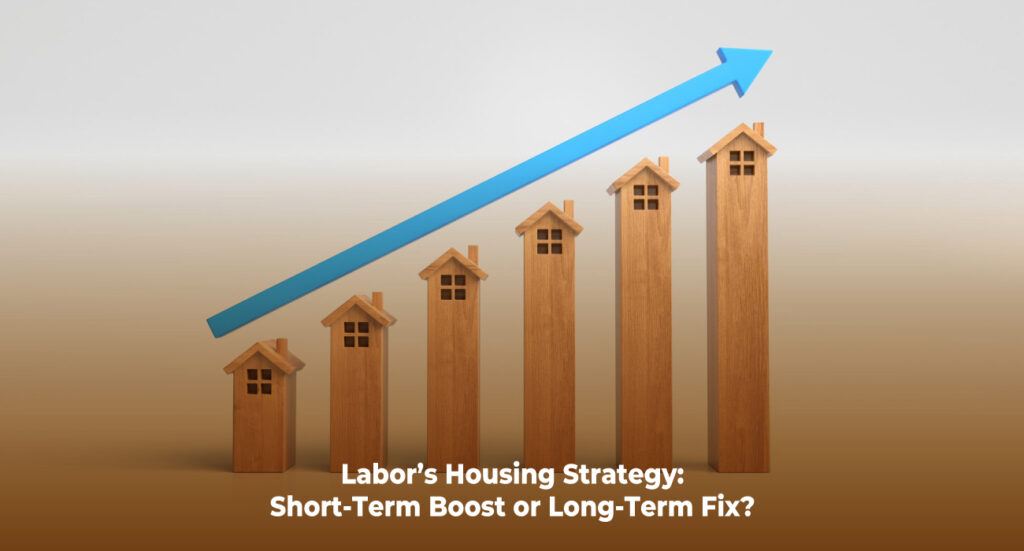2025 Federal Election: What the Major Parties Are Promising for Housing
As the 2025 federal election approaches, housing has emerged as one of the most fiercely debated battlegrounds. It’s no surprise—after years of rising rents, limited supply, and frustrated first home buyers, the public is demanding bold action. And this time, both major parties are stepping up with very different visions.
But behind the headlines and promises lies a deeper question: are these policies built to win votes or to actually solve the housing crisis?
Labor is pitching long-term structural change through large-scale housing developments and government-backed homebuyer support. The Coalition is offering an immediate tax break, focusing on simplicity and individual affordability. Their policies reflect more than just economics—they reveal how each party views the role of government, the market, and the average Australian trying to buy a home.
So, what’s actually on offer? And are we tackling the real issues—or just circling around them with quick fixes and convenient scapegoats?
Let’s unpack it.

What Are the Major Parties Offering in 2025?
With the federal election around the corner, both major parties have unveiled new housing policies targeting first home buyers:
🔴 Labor has promised to build 100,000 new homes, exclusively for first home buyers. They’ll work with state governments to fast-track approvals and land release. Eligible buyers with a 5% deposit can access government support to avoid lender’s mortgage insurance—a potential saving of around $23,000. But the catch? You’ll need approval from a government agency to access the remaining 15%—which adds complexity.
🔵 The Coalition, on the other hand, is offering simplicity. First home buyers of new-builds can deduct mortgage interest from their taxable income—up to $650,000, for five years. If you’re earning under $175,000 as a single or $250,000 as a couple, this could be a powerful way to reduce tax and increase affordability without waiting for approvals or jumping through bureaucratic hoops.
I’m not here to sway your vote—but it’s worth noting that simplicity and clarity often make a big difference when it comes to housing policies. The Coalition’s proposal offers a more straightforward approach that may appeal to first home buyers who prefer clear, immediate benefits. On the other hand, Labor’s policy focuses on long-term housing supply through government-backed developments. Both have merits—it really comes down to which approach aligns better with your personal goals and circumstances.

Let’s Talk About International Students—and the Real Housing Issue
Both Labor and the Coalition have blamed students for the rental crisis. Labor tried to limit their numbers. Dutton now wants to cap student visas—after previously opposing the idea. It’s political theatre.
Let’s get real. Most international students come with funds, they live in the city, and they pour money into the economy—supporting landlords, universities, cafés, restaurants, and other small businesses like legal practices and student consultants. Their presence has helped keep entire sectors afloat.
Meanwhile, most Australian families want to live in suburbs, where there’s space, backyards, and room to raise children. The overlap between international student demand and the typical Aussie dream home in the suburbs is minimal. So why are we blaming students instead of tackling the root cause?
If the issue is housing—then build more housing. Speed up planning approvals. Invest in infrastructure. Don’t choke off a $50 billion sector to hide poor urban planning.

How the Coalition’s Property Policies Could Impact Prices?
While both parties claim to be tackling housing affordability, the Coalition’s proposal to unlock supply through a $5 billion property-related infrastructure fund may have the most direct impact. By funding the local roads, sewer systems, and other “last mile” connections that often delay property development, this policy could unleash up to 500,000 new homes, according to industry estimates. Unlike large-scale subsidies, this approach removes development bottlenecks so that private property developers—who are ready and willing—can build faster. Compared to Labor’s $10 billion plan to construct 100,000 homes, the Coalition’s policy delivers five times the property supply at half the cost, offering more bang for taxpayers’ bucks.
However, not all of the Coalition’s property-focused ideas are winners. Its proposal to make mortgage interest tax-deductible may sound appealing, but economists argue it’s among the most counterproductive housing policies. Why? Because it boosts demand without increasing property supply—pushing up prices for everyone. High-income earners benefit the most, while the broader market suffers from inflated property values and distorted incentives. Similarly, the government’s 5% deposit guarantee shifts the risk onto taxpayers. At least the Coalition’s “super for housing” plan asks buyers to dip into their own superannuation savings, reducing public exposure. But in all cases, unless we prioritise increasing property supply, tweaking demand levers might only make the affordability crisis worse.

Labor’s Housing Strategy: Short-Term Boost or Long-Term Fix?
Labor’s housing policy is centred on long-term supply-building, backed by a $10 billion commitment to deliver 100,000 new homes over eight years, exclusively for first home buyers. Alongside this, Labor is expanding its First Home Guarantee, allowing eligible buyers to enter the property market with just a 5% deposit and no lenders mortgage insurance—an initiative that could save individuals up to $20,000. However, as reported by ABC, housing experts caution that while these policies aim to address affordability, they will likely push property prices higher in the short term by stimulating buyer demand. Dr Nick Garvin from the e61 Institute warns that such schemes, although helpful for current first home buyers, may put upward pressure on prices for future ones.
On the supply side, the results may take time to materialise. According to housing researcher Hal Pawson, Labor has laid groundwork through the Housing Australia Future Fund (30,000 social homes) and the Build-to-Rent tax incentives, which the Property Council estimates will deliver 80,000 units over a decade. The ‘Build to Buy’ initiative—partnering with state governments and selling at near cost price—could see some homes offered at up to 20% below market value, helping ease pressure in select areas. If delivered as promised, Labor’s policies may increase housing supply by about 10% annually over time. But as always, the real question is whether the construction workforce can keep up with the ambition.

Why the Australian Property Market Matters So Much to Politicians
Property isn’t just about bricks and mortar in Australia—it’s tied to our identity, economy, and aspirations. It affects everything from tax revenue and cost of living to intergenerational wealth and even retirement planning. When property prices rise, so does household equity. When they fall, so does consumer confidence. And with affordability stretched and housing supply tight, owning a home has become both a challenge and a political pressure point. Ultimately, politicians know that few things matter more to voters than having a secure roof over their heads—it’s the great Australian dream, and a powerful ballot-box issue. That’s why every election, without fail, housing policies take centre stage. As tax specialists, we understand that every policy decision—whether from a current government or one on the campaign trail—can have a significant ripple effect on the property market. From tax incentives and deposit schemes to infrastructure investment and planning reforms, these shifts directly influence how our clients buy, invest, and build long-term wealth through property.
Book a consultation with our tax specialists today and take the guesswork out of your next move. Because when property meets policy, strategy is everything.
General Advice Warning
The material on this page and on this website has been prepared for general information purposes only and not as specific advice to any particular person. Any advice contained on this page and on this website is General Advice and does not take into account any person’s particular investment objectives, financial situation and particular needs.
Before making an investment decision based on this advice you should consider, with or without the assistance of a securities adviser, whether it is appropriate to your particular investment needs, objectives and financial circumstances. In addition, the examples provided on this page and on this website are for illustrative purposes only.Although every effort has been made to verify the accuracy of the information contained on this page and on our website, Investax Group, its officers, representatives, employees and agents disclaim all liability [except for any liability which by law cannot be excluded), for any error, inaccuracy in, or omission from the information contained in this website or any loss or damage suffered by any person directly or indirectly through relying on this information.





